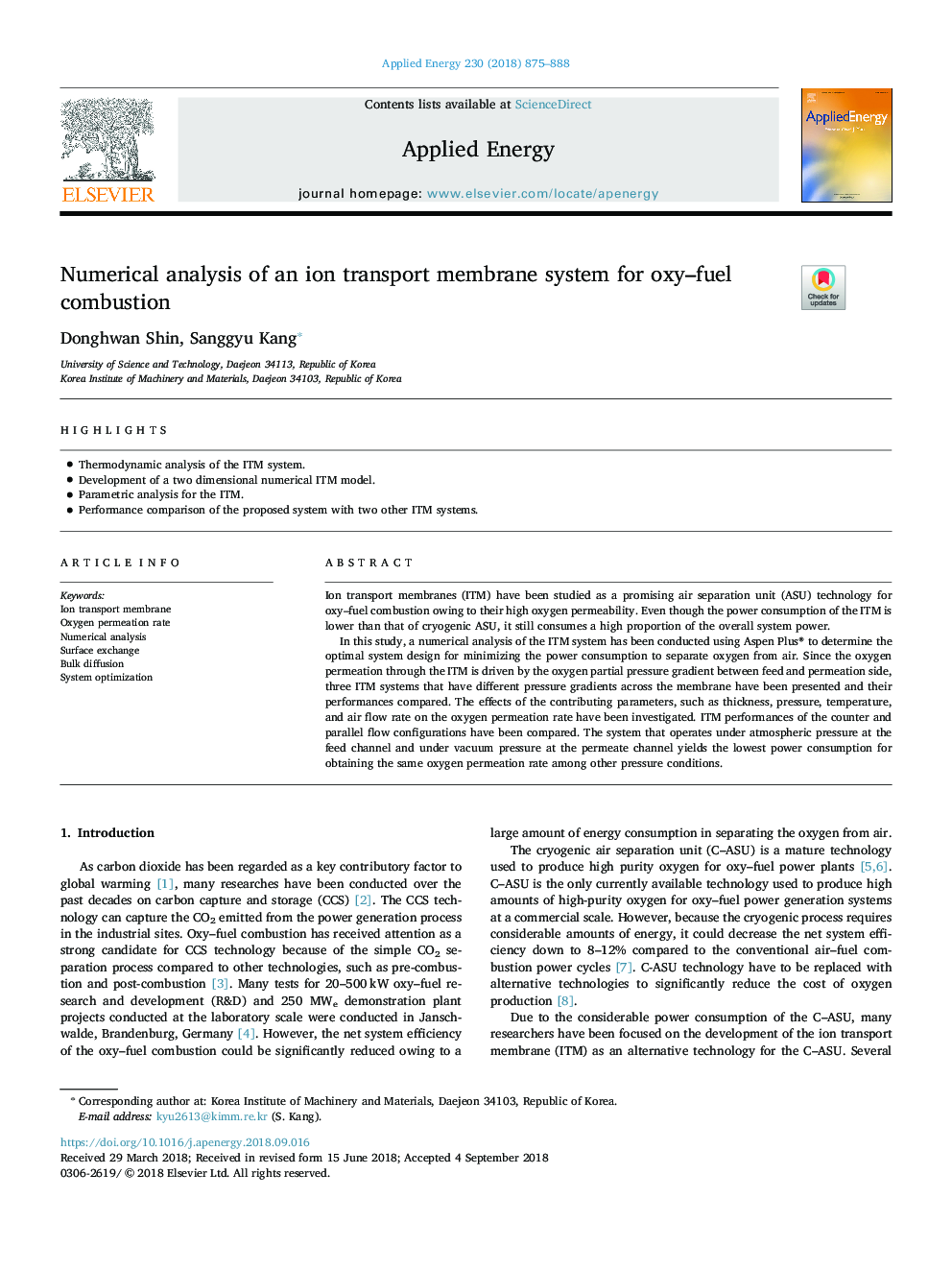| Article ID | Journal | Published Year | Pages | File Type |
|---|---|---|---|---|
| 10131420 | Applied Energy | 2018 | 14 Pages |
Abstract
In this study, a numerical analysis of the ITM system has been conducted using Aspen Plus® to determine the optimal system design for minimizing the power consumption to separate oxygen from air. Since the oxygen permeation through the ITM is driven by the oxygen partial pressure gradient between feed and permeation side, three ITM systems that have different pressure gradients across the membrane have been presented and their performances compared. The effects of the contributing parameters, such as thickness, pressure, temperature, and air flow rate on the oxygen permeation rate have been investigated. ITM performances of the counter and parallel flow configurations have been compared. The system that operates under atmospheric pressure at the feed channel and under vacuum pressure at the permeate channel yields the lowest power consumption for obtaining the same oxygen permeation rate among other pressure conditions.
Related Topics
Physical Sciences and Engineering
Energy
Energy Engineering and Power Technology
Authors
Donghwan Shin, Sanggyu Kang,
